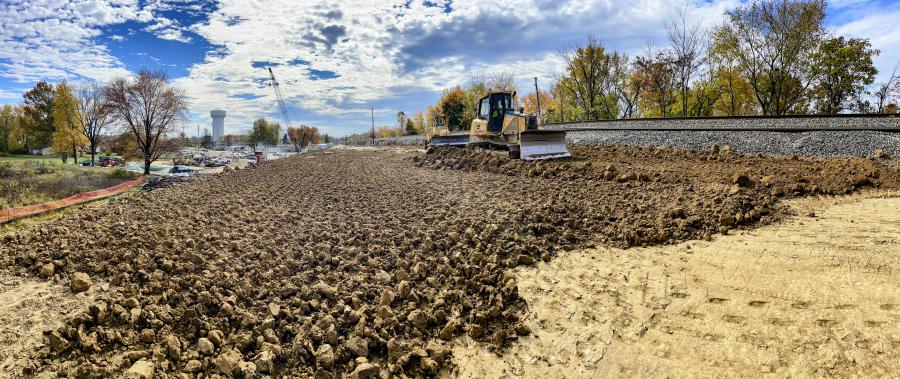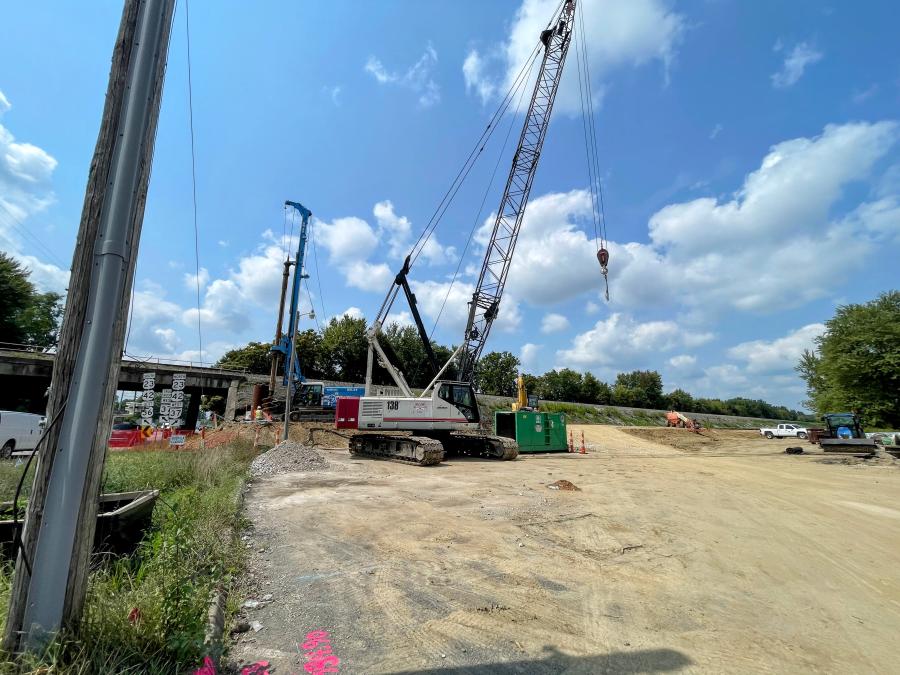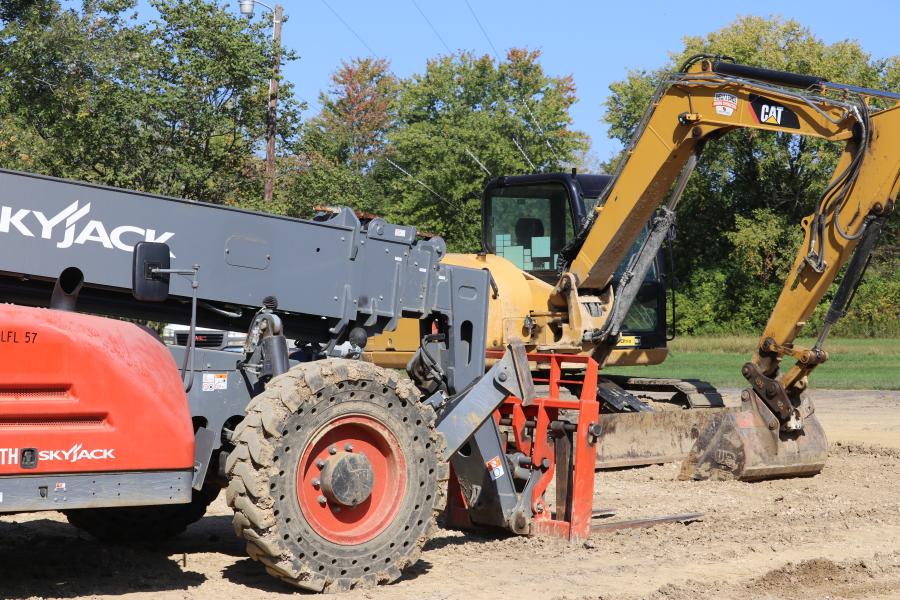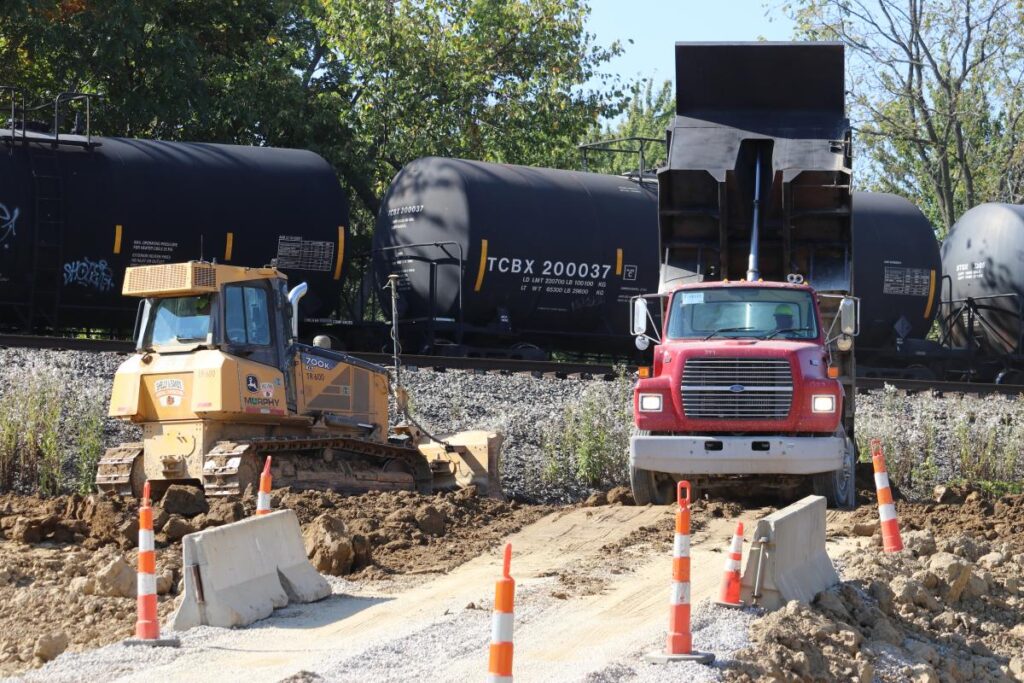A $45 million effort designed to relieve congestion along U.S. 36 and SR 37 is moving forward in Delaware, Ohio.
(ODOT photo)
A $45 million effort designed to relieve congestion along U.S. 36 and SR 37 is moving forward in Delaware, Ohio. The Point Project focuses on the intersection of the two routes, which serves more than 27,000 vehicles per day, including freight transport, motorists traveling to and from work and emergency responders. Traffic models project that number to increase to almost 40,000 vehicles by 2040.

“The congestion on the east side of the city of Delaware has substantially increased in the last 10 years,” said Brian Davidson, Ohio Department of Transportation (ODOT) District 6 local programs manager. “With the business growth coming to the region, the traffic will make this vital intersection even more congested and increase safety concerns.”
As part of the undertaking, The Point will replace the Norfolk Southern railroad bridge over U.S. 36/SR 37 to accommodate widening of the existing bottleneck from one to two lanes in each direction.
“Currently, traffic traveling westbound on U.S. 36 has to merge into one lane as vehicles approach the bridge,” said Hannah Salem, ODOT public information officer. “The widening of the bridge will allow for an additional lane to be added and eliminate the need for this westbound merge. Eastbound traffic also will benefit from this improvement, as capacity will be increased with the additional lane.”
The project will provide pedestrian facilities, as ODOT and the city of Delaware are both committed to providing safe corridors for all modes of transportation. Two-way traffic will be maintained for most of the work. The largest impacts will be seen in the second and third phases of construction taking place in 2024 and 2025.
Work began in May 2023 and is expected to be completed in the fall of 2025. Shelly & Sands was selected by low bid to carry out construction tasks, based on set ODOT prequalification. Shelly & Sands built the Lazelle Road railroad grade separation project, 11.6 mi. to the south on this same rail line.

According to Davidson, the city of Delaware initiated the project and received funding from the Mid-Ohio Regional Planning Commission, the Transportation Review Advisory Council, ODOT Highway Safety Program and ODOT District Preservation funding.
“With all state and federal funding, ODOT has oversight on behalf of FHWA, and coordinates project development that includes NEPA and Right-of-Way acquisition. ODOT also is administering construction on behalf of the city.”
“From a cost standpoint, The Point Project is the largest single infrastructure improvement project in the city’s history,” said Jonathan Owen, city of Delaware deputy city engineer. “It will correct a long-standing traffic management problem. It’s a part of the city’s efforts to make improvements to the east side along U.S. 36 and SR 37 from U.S. 23 to the east side of the city.
“We appreciate the partnership with ODOT and funding partners on this vital project to make improvements to the state and U.S. highway system within the city.”
The undertaking is the second of three major infrastructure projects needed on the east side. The first project, which included upgrades to U.S. 36 between U.S. 23 and The Point, was completed in 2020. A future project will make improvements to the SR 37 corridor between U.S. 23 and The Point.
ODOT project engineer Daniel Supron noted the biggest challenge so far has been getting the subgrade for the temporary bridge embankment to pass a proof roll.
“We dealt with a lot of rain early in the project, and the initial subgrade was very wet, and a lot of undercuts were performed.”
Currently, workers are creating the embankment for the temporary railroad bridge. Main tasks already completed include building demolition, along with clearing and grubbing. Crews must still construct the temporary and permanent bridges and carry out all roadway work.
Supron said replacing the Norfolk Southern railroad bridge over U.S. 36/SR 37 involves tearing down the current bridge. Building the temporary bridge requires drilled shafts, sheet piling walls, constructing the abutment, setting the structural steel and building the deck, while creating the shared use path involves clearing and grading the area, as well as placing aggregate base and asphalt.

Roughly 60,000 cu. yds. of embankment will be moved on the project.
“A lot of work was required to clear the trees and brush before any earthwork could begin,” said Supron. “Then the ditch needed to be relocated, and undercuts were required before the embankment could be built.”
Heavy equipment being used at the job site includes a crane, excavator and bulldozer. A sheep foot roller and drill rig also are necessary.
Much work remains, but Supron said each day brings fulfillment for everyone who’s been involved in the planning and construction.
“It’s very significant to be part of a project that will hopefully improve the lives of thousands of people every day.” CEG
Read the full article here











